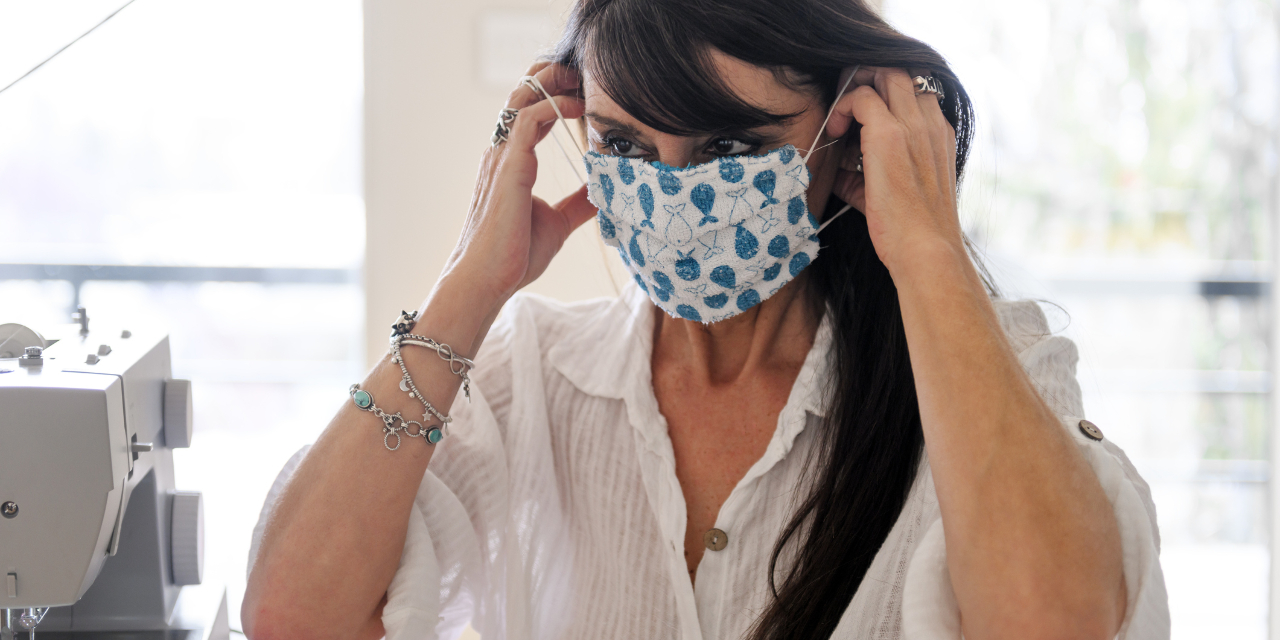Ideas for do-it-yourself masks are everywhere, but how do you know which are the best?
There are no clear answers, but with that in mind, University of Alberta clothing and textiles professor Anne Bissonnette hopes a website she's created can at least help people make some science-based choices as they sit down to their sewing.
Mask recommendationsAccording to Government of Canada recommendations, non-medical face masks should:
|
She wanted to help counter a knowledge gap she's seeing in the news about the pros and cons of different fibres and fabrics people might use at home, and the most effective mask designs.
"I was noticing a lack of scientific evidence offered to the general public," said Bissonnette, who studies material culture.
"Everybody says how to make a mask, but where's the scientific evidence that demonstrates why one should do it this way? As a researcher who deals with textile and dress and as a maker trained as a designer, (I had) many questions that I could not find solid answers for.
"The science is evolving and the testing of homemade cloth masks for efficacy is greatly lacking."
It pushed her to do an extensive online search using Google Scholar, and compile a list of published, peer-reviewed scientific studies about homemade cloth face masks and information she believes could be useful to people fashioning their own versions.
"They may not want to read all the posted research, but it's there if they do. The importance of textile knowledge isn't part of our current culture but it's needed now, especially as Alberta reopens. Wearing a facemask will become even more important with more people on the street and social distancing becoming harder to do."
The website will evolve as she and other researchers add to the list of information.
"Things are moving fast," Bissonnette added.
The website offers four sections that touch on government guidelines, the history of use and research on cloth masks dating back to 1918, peer-reviewed scientific information on testing done between 2008 and 2020, and evidence-based solutions for making, using and caring for reusable homemade cloth masks.
"People can sift through the papers, look at the evidence, think of ways to improve things and eventually get to better solutions themselves. They can use their individual knowledge to understand the information in different ways, and it allows for a sharing of interdisciplinary work-everybody brings something to the mix."
Seeing a problem, tackling the challenge
Armed with the information she gathered, Bissonnette made her own masks,at the same time tackling something she noticed was missing: a design for people with eyeglasses.
"There are four billion of us who wear glasses and we all know our breath fogs them up when the warm air comes up through the mask," she said.
After some trial and error, she made and then shared on the website, instructions for a two-layer cloth mask made like a pocket that can be worn two ways, and has an optional third non-woven layer insert for added filtration.
Her design is based on a mask recommended by the Government of Canada, but made with fewer layers that eyeglasses have to sit on. It also features a removable wire made from a paper clip to create a better seal for the nose and eyes, and fabric ties around the head to accommodate eyeglasses and hearing aids.
"Mine is a variation on a simple, rectangular surgical mask, but I've found the modifications have the ability to better accommodate eyewear and improve the fit, which is significant. While very little scholarly testing has been done on the efficacy of homemade masks, we know breathability and the tight seal between face and mask are extremely important," said Bissonnette.
She added that the design avoids too many layers of dense fabric that hamper breathability and cause foggy glasses. Adding a filter of non-woven material, like a paper towel, as recommended on the Government of Canada website, can more efficiently capture tiny particles.
After reading scientific studies that tested tightly woven cotton fabrics for their effectiveness in preventing infection, she made her masks with 280 thread count, 100 per cent cotton sateen, often used in high-quality pillowcases and sheets.
The articles Bissonnette read didn't explain why researchers focused on cotton, but she believes it's likely because the fibre is very absorbent, comfortable, easy to sanitize and commonly found in people's homes.
"All of this allows a well-fitted homemade mask to offer a small degree of protection to the public from an infected person, and it also protects us from touching our faces, which is a bad habit many of us have," she said.
Though significantly less effective than the N95 mask used by medical professionals, "it is more effective than no mask at all and better than hoping coughing in one's elbow will catch all droplets," she said.
